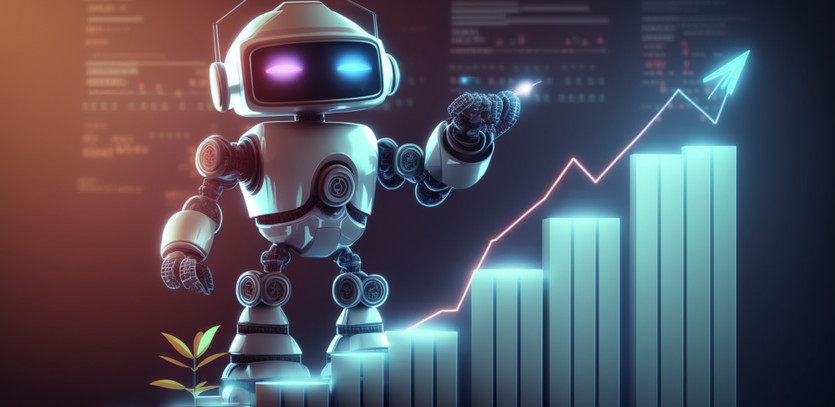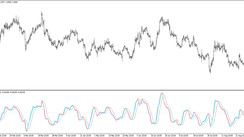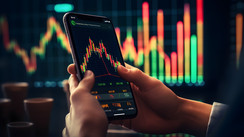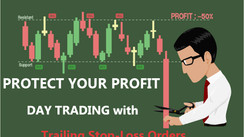The Alluring World of Automated Trading
In the contemporary digital era, the allure of effortless earnings through automated trading bots or Expert Advisors (EAs) has attracted many towards financial markets. Before diving into the realm of these autonomous financial instruments, however, it is crucial to consider several factors.
While automating trading strategies offers a host of benefits, it also brings its own set of challenges. Remember that making a substantial fortune is seldom easy. The appeal of quick, easy money is a timeless trading scam. There are real possibilities for profits with trading bots and learning how to automate strategies. But unfortunately, to accomplish this effectively might actually take longer than learning to trade manually. This is because a trader must first understand how to trade, and then additionally learn how to automate the strategies via a programming language. Purchasing a trading program comes with its own set of challenges, which we will discuss in due course.
In this guide, we delve deep into this subject, analyzing the advantages and disadvantages of automated trading and EAs.
What Exactly is Automated or EA Software?
Automated trading software comes by various names such as Expert Advisors (EAs), robotic trading, program trading, automated trading, or black box trading.
Essentially, automated software is a sophisticated program that runs on your computer and executes trades on your behalf. The program only executes trades based on pre-determined parameters in line with the code written into the software. Crafting a trading program requires not only extensive trading knowledge but also adept programming skills.
EAs operate based on a specific trading strategy, which needs to be simple enough to be broken down into a series of programmable rules. The complexity of a strategy directly impacts its programmability, with more complex strategies being harder to convert into a functional program.
For individuals who purchase trading software, they are entirely dependent on the trading expertise and programming skills of the software's creator. This can place them in a precarious position.
Like most software, trading programs require periodic updates. As market conditions shift, the software needs to be updated in tandem. If these updates aren't carried out by someone with requisite knowledge, the software might quickly become obsolete in terms of profitability (if it was profitable to begin with). EAs that are developed and maintained by skilled traders and programmers stand a better chance at remaining profitable over the long haul.
Beware of High-Pressure Sales Tactics
While a handful of EAs can deliver good returns, most do not. A tiny fraction of individuals who venture into day trading prove successful, and this includes those who create and purchase EAs. Despite employing a trading robot, the odds of success remain slim.
Successful traders using EAs constantly monitor their EA's performance, make adjustments as market conditions shift, and intervene during unusual events (as random occurrences can affect the programming in unexpected ways). These successful robotic traders, much like their successful manual counterparts, put in the necessary work to create and sustain profitability.
This sharply contrasts with the EAs sold online, promising a life of riches and zero effort for a mere $79.95! Once you buy an EA, rarely is there support and updates after the fact. Even if the creator of the EA is successful, that doesn't guarantee the buyer's success. The creator may occasionally intervene, or turn the program off (during significant news events, for example). Even slight alterations to when the program is run can drastically affect the results. Unless the creator of the program is guiding you on how to do this or providing long-term updates and monitoring as market conditions change, it's advisable to avoid falling for the sales pitch.
The Misconception of Total Automation
Contrary to popular belief, successful robotic traders invest a great deal of effort into creating and maintaining their programs. The actual challenge lies in maintaining the program. One can't simply flick a switch and watch the money flow in while doing nothing. While such a tactic may work for a while, market conditions do change, and unexpected events can occur, necessitating intervention by the trader.
If an individual purchases an EA, it's unlikely they'll possess the expertise to know when to intervene and when not to. Unnecessary interventions could turn a winning strategy into a losing one, just as failing to intervene when required could rapidly deplete the trading account.
In the Market Wizards book series by Jack Schwager, several successful automated traders are interviewed. All these traders were highly engaged with their strategies, and not just passively observing. It is highly improbable that a person can purchase an EA, leave it running while they sleep and work at another job. This approach might work, but only if they actively monitor the EA's performance, understand how to alter the program when market conditions change, and know when and how to manually intervene when required.
Some individuals believe that robotic trading removes the emotional aspect of trading. Sadly, this is a misconception. Although the program itself doesn't experience emotion, the person operating the program does. Traders might be tempted to intervene when they see the program losing money, even though the program might still be functioning well (since losing trades are inevitable). Or, they might intervene to prematurely take profits, manually overriding a trade when they see a profit they find appealing. All these emotionally-driven actions could obliterate an EA's profitable edge in the market.
Automated trading is rarely a case of set-it-and-forget-it. Maintaining an EA requires substantial knowledge, and trading skills/psychological skills are still required to intervene when necessary, but not excessively.
Pros of Automated (Robotic or EA) Trading
Automated trading comes with numerous advantages:
- Time efficiency: It allows the execution of trades even when the trader is unavailable or occupied with other tasks.
- Emotionless trading: It eliminates emotional bias, providing an objective and calculated approach to trading.
- Diverse trading: It allows for trading multiple accounts or different strategies simultaneously.
- Backtesting: It offers the possibility of backtesting based on historical data before application in real time.
- Consistent trading discipline: It strictly follows the set trading plan without deviations.
- Increased speed of execution: It reacts to changing market conditions much quicker than a human trader.
Despite these benefits, it is important to acknowledge that automated trading is not a quick-fix solution to achieving financial success.
Cons of Automated (Robotic or EA) Trading
Automated trading does come with its own set of drawbacks:
- Mechanical failures: System crashes or connectivity issues can lead to missed or incorrect orders.
- Over-optimization: Backtesting using specific market conditions might create an 'over-fitted' system that does not adapt well to future conditions.
- Monitoring necessity: Despite the notion of a 'set-and-forget' system, automated systems need constant monitoring for mechanical failures, anomalies, or changes in market conditions.
- Unforeseen anomalies: Unpredictable market events can significantly impact an automated system.
- Limited versatility: While EAs can be designed to perform well under specific scenarios, they might struggle when applied to different market conditions.
The nuanced complexities and challenges associated with automated trading further underline the fact that successful trading—be it manual or automated—requires more than a superficial understanding of the market and a purchased piece of software.
In Conclusion: The Human Factor Remains Key
The allure of automated trading and the potential for profit may seem irresistible. Yet, it's crucial to appreciate the fact that automated trading is not a shortcut to quick riches but an instrument that can help leverage one's trading skills—if used judiciously.
The human element in trading, be it understanding market dynamics, modifying trading parameters, or making critical decisions during unusual market events, remains irreplaceable. Profitability in trading is as much about the trader's skills, knowledge, and emotional management as it is about the tools used.
When considering using automated trading software, it is crucial to ask yourself whether you possess the necessary skills and knowledge to navigate this space effectively. Furthermore, a healthy degree of skepticism towards high-pressure sales tactics is always beneficial.
The bottom line is, a more nuanced understanding of automated trading systems—complete with their pros, cons, and necessary safeguards—is crucial for anyone looking to venture into this fascinating realm of trading.





